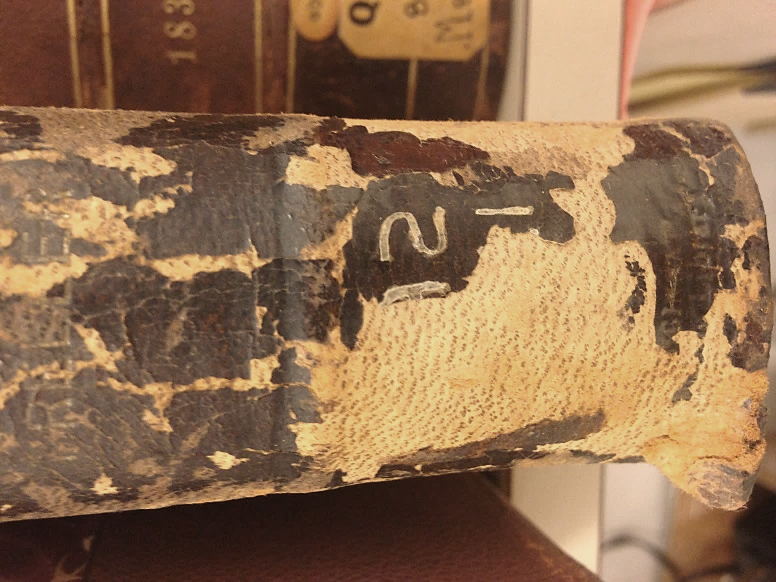If you’ve ever had the pleasure of handling special collection materials, you may have noticed that some books stand the test of time better than others.
In particular, why is it that some older leather books that date to the 15th century still function well, while other leather covered books from the 1700’s and 1800’s fall apart and turn to powder in our hands?
The reason is twofold. Books made in the Carolingian, Romanesque and Gothic periods were highly engineered luxury items that were made with high quality materials. Later, as books become more of a household commodity, quality was sacrificed to meet rising production needs, leading to books being made cheaply with poor quality materials. The common degradation we find in 18th and 19th century tightback leather bindings is a direct result of poor construction combined with the use of poor quality materials.
What exactly is causing this later leather to degrade? There are many reasons such as environmental factors, but two of the most common condition issues are caused by the type of animal skin used, and the materials used to tan the leather.
For example, sheepskin leather exhibits characteristic degradation of shearing away in layers while calfskin does not. This is essentially because sheep have a thicker undercoat of fur. The roots of the sheep’s undercoat grow in-between the lower corium and upper grain layers of the skin, and after the hair is removed during the tanning process, a microscopic void is left between the layers of skin. As a result, the leather becomes vulnerable to delamination overtime (see photo below).

Another common condition issue is red rot. Different than age hardening and leather shrinkage (which is cause by fluctuations in environmental conditions), red rot refers to when leather has discolored to an orange or red color, and is brittle and powdering. This condition issue is most likely a caused by the presence of sulfur in the vegetable tanning process, used particularly in the 19th century. Overtime, the sulfur acts as an agent to cause acid hydrolysis. Below is an image of a book suffering from red rot.

Ashleigh Schieszer (PLCH) — Book and Paper Conservator
A Blog of the Preservation Lab at UC
